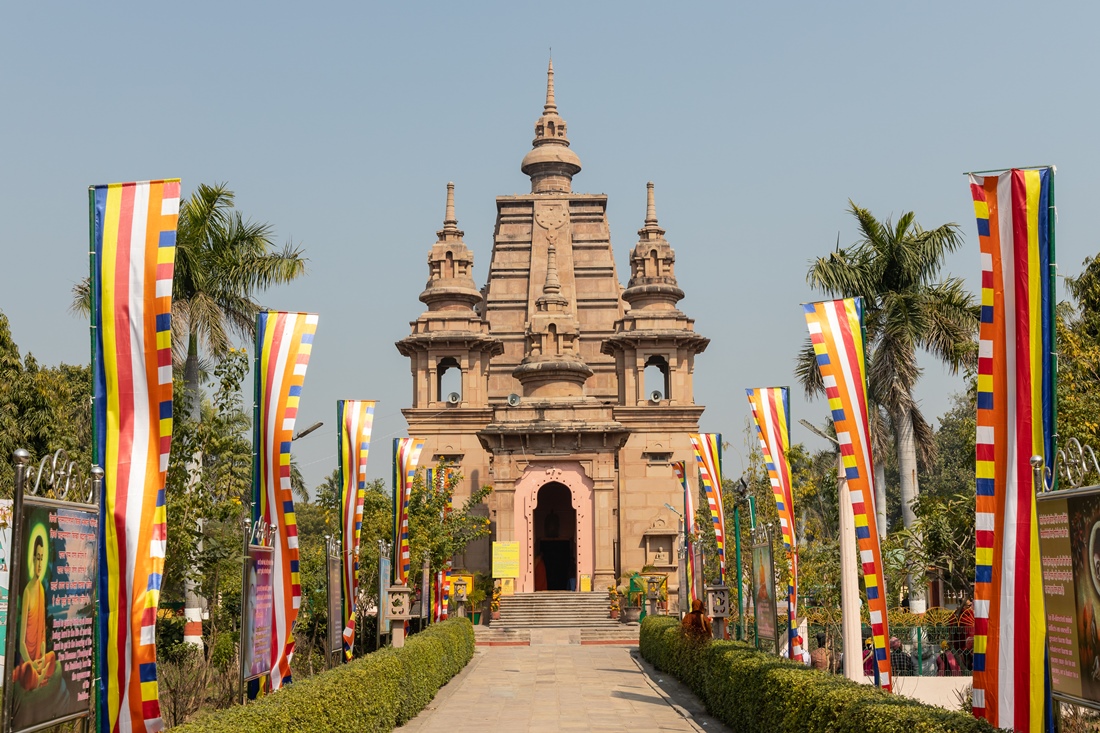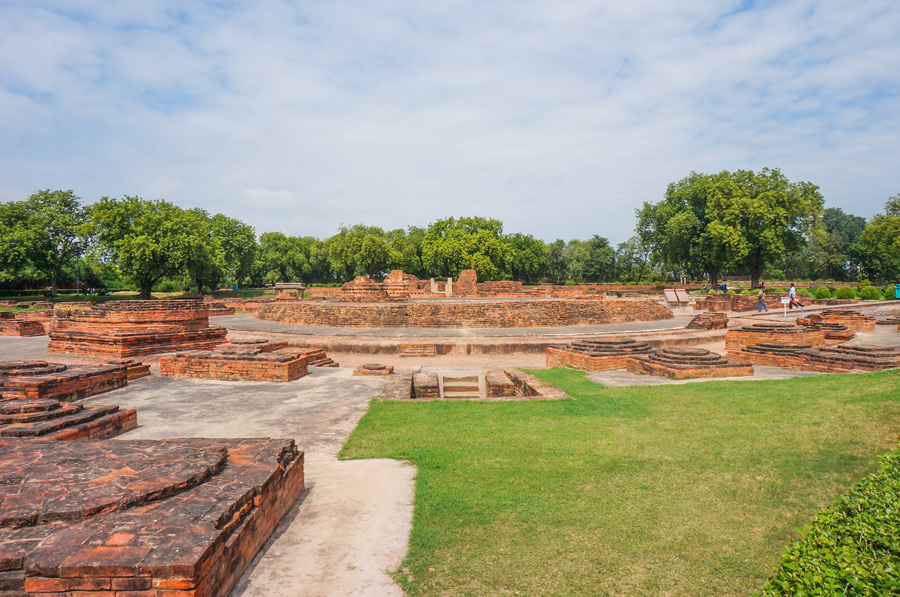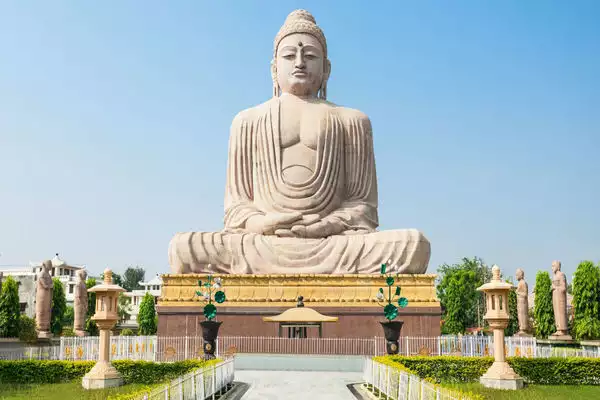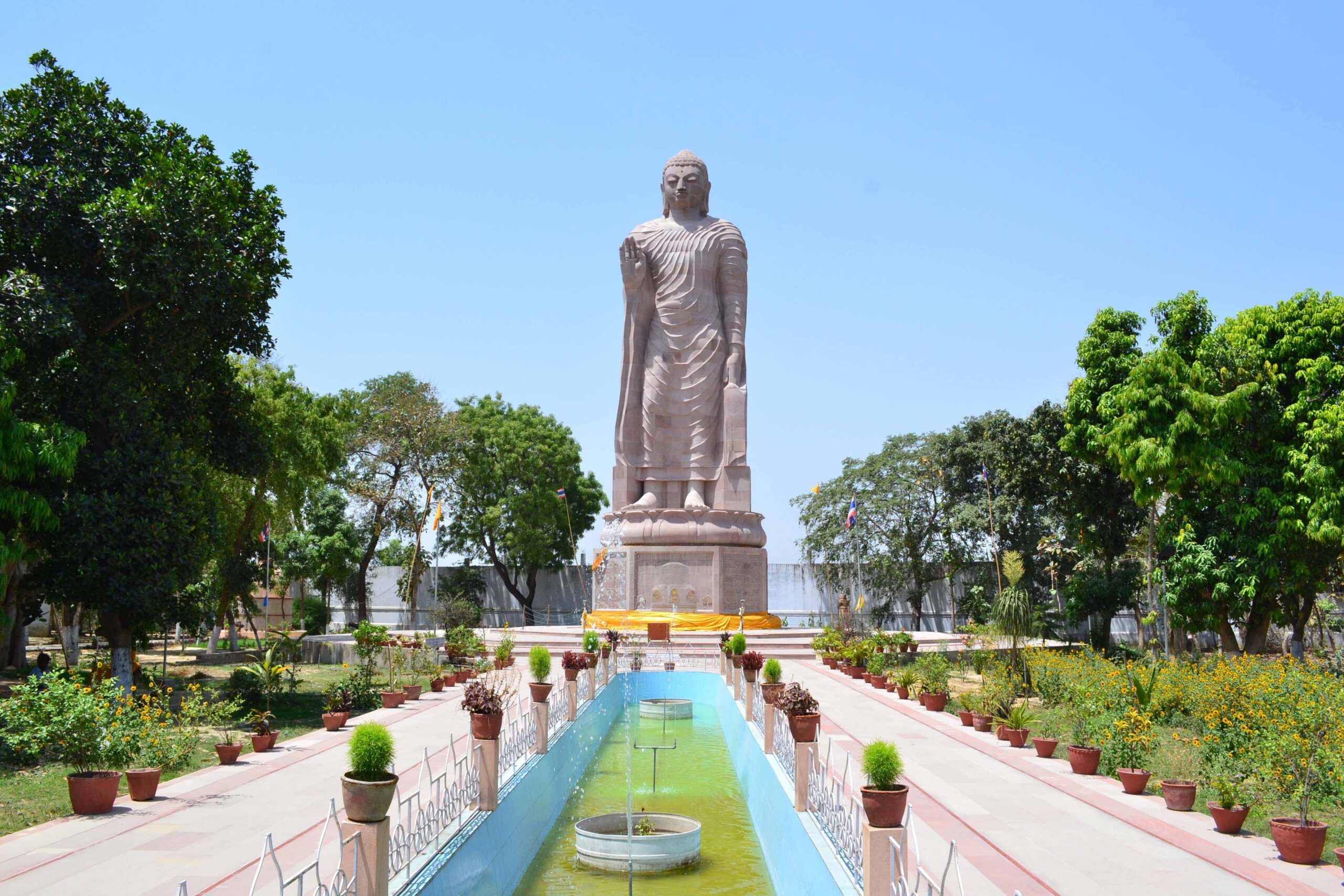
Sarnath is a sacred and historical site located near the city of Varanasi (also known as Benares or Kashi) in the northern Indian state of Uttar Pradesh. It is an important pilgrimage destination for Buddhists and a significant historical and cultural site. Sarnath is situated approximately 13 kilometers (8 miles) from Varanasi and is often included in the itineraries of tourists and pilgrims visiting the region.
History of Sarnath
The history of Sarnath is deeply linked to the rise and spread of Buddhism. Sarnath, located near Varanasi in the Indian state of Uttar Pradesh, is considered one of the most important sites in Buddhist history. Here is a brief overview of the history of Sarnath:
Pre-Buddhist Era: Sarnath, located near the ancient city of Varanasi (Benares), has a history that predates Buddhism. It was a prominent center of trade and culture in ancient India during the time of the Mauryan Empire (3rd century BCE) and earlier. The city was known as “Isipatana” in Pali, meaning “the place where the holy men (sages) descended.”
Buddha’s First Sermon: The most significant event in Sarnath’s history occurred in the 6th century BCE when Siddhartha Gautama, who would later become known as Lord Buddha, gave his first sermon here. This event is referred to as the “Dharmachakra Pravartana” or the “Turning of the Wheel of Dharma.” In this sermon, he taught the Four Noble Truths and the Eightfold Path, laying the foundation for Buddhist philosophy and practice.


Mauryan Emperor Ashoka: The Mauryan Emperor Ashoka, a devout Buddhist, visited Sarnath around 250 BCE. He erected the famous Ashoka Pillar with inscriptions detailing his dedication to Buddhism and his efforts to spread the Buddha’s teachings. The lion capital of this pillar, featuring four lions facing different directions, is now the emblem of India. Sarnath is a place of profound spiritual and historical importance in Buddhism. It marks the beginning of Buddha’s teaching mission and remains a place of veneration and reflection for Buddhists worldwide. The ancient monuments, relics, and the spiritual atmosphere of Sarnath make it a sacred and revered destination for those seeking to connect with the teachings and legacy of Lord Buddha.
Rediscovery: Sarnath remained largely forgotten until the late 19th century when British archaeologists rediscovered and began to excavate the site. The excavations revealed the ancient Buddhist structures and artifacts, including the Dhamek Stupa and Ashoka Pillar. In the 20th century, the Indian government, along with various international organizations, undertook efforts to restore and preserve the monuments of Sarnath. The site was developed as a significant archaeological and pilgrimage destination.
Modern Sarnath: Today, Sarnath is a thriving pilgrimage destination and a center for the study of Buddhism. It attracts Buddhists and tourists from around the world who come to explore its historical and religious significance. Modern Buddhist temples and monasteries have been constructed in the area, creating a vibrant Buddhist community.
Buddhist Significance of Sarnath
Sarnath is a major pilgrimage destination for Buddhists from around the world. Buddhists visit Sarnath to pay their respects to the sacred sites associated with Lord Buddha’s life and teachings. Pilgrims often circumambulate the stupas and engage in meditation and prayer in the tranquil surroundings of Sarnath.
First Sermon (Dharmachakra Pravartana Sutra): Sarnath is renowned as the place where Lord Buddha delivered his first sermon after attaining enlightenment. This sermon is known as the “Dharmachakra Pravartana Sutra” or the “Turning of the Wheel of Dharma.” In this sermon, Buddha expounded the Four Noble Truths and the Eightfold Path, laying down the fundamental principles of Buddhism. Sarnath is often referred to as the “Cradle of Buddhism” because of this historic event.


Foundation of the Sangha: Following Buddha’s first sermon at Sarnath, his five ascetic companions who had abandoned him earlier became his first disciples. This event marked the formation of the monastic community, known as the Sangha, which played a pivotal role in the spread of Buddhism.
Emperor Ashoka’s Patronage: Emperor Ashoka, one of the most famous rulers of ancient India and a devout Buddhist, visited Sarnath in the 3rd century BCE. He is credited with erecting a stupa (the Dhamek Stupa) and an inscribed pillar (the Ashoka Pillar) at Sarnath to commemorate Buddha’s teachings and to promote Buddhism. The Ashoka Pillar, featuring its four-lion capital, is a symbol of Buddhism and the national emblem of India.
Modern Buddhist Temples and Monasteries: Sarnath is home to various modern Buddhist temples and monasteries built by different Buddhist communities from around the world. These serve as places of worship, meditation, and study for Buddhist monks and followers, fostering a vibrant Buddhist presence in the area.
Popular Tourist Attractions in Sarnath
Distance from various locations in Varanasi
8 KM from Shri Kashi Vishwanath Temple,
25 KM from Lal Bahadur Shastri International Airport, and
8.9 KM from Varanasi Junction railway station.
